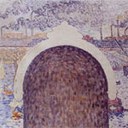0046 Valiant, Independent, and Harmonious: Paul Signac and Neo-Impressionism after 1900
Identifiers (Article)
Identifiers (Files)
Abstract
Through a close reading of Parisian art criticism around 1900, this essay examines Paul Signac's role as de facto head of the neo-impressionists and guiding spirit of the Salon des Indépendants. Signac, and the neo-impressionists generally, had suffered from the decline of the Indépendants in the latter 1890s, but the resurgence of both group and Salon in 1901 positioned Signac as one of the most significant avant-garde artists in the early 20th century, where he played a vital role in the most significant art debates then animating Paris. Their return to prominence was due in no small measure to Signac's latest foray into the decorative, a highly charged arena that would be central to the artistic debates of the first decade of the 20th century.
Statistics


License

This work is licensed under a Creative Commons Attribution-NonCommercial-NoDerivatives 4.0 International License.



